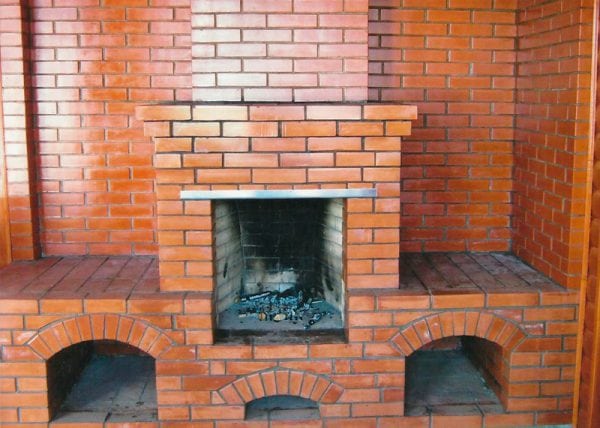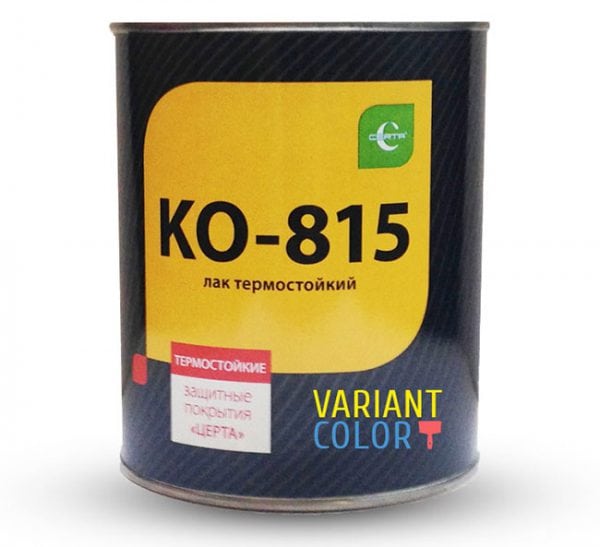Stoves are a common attribute of a comfortable life in a private home. Its main purpose is utilitarian - heating the room and cooking. However, the oven often acts as a decorative element of the interior. In a well-designed interior, this heating device matches the overall design intent. To emphasize the beauty of the furnace, special heat-resistant varnishes are used.
- Fields of application
- Characteristics of oven varnish
- Tips for working with varnish
- Safety regulations
- The most common varnish oven varnish
- DIY oven varnish
- Conclusion


Fields of application
Thermally stable paints and varnishes (LKM) are compatible with many materials from which stoves and fireplaces are built or which are finished, for example:
- brick;
- a rock;
- metal;
- ceramic tile;
- plaster.
Also, a heat-resistant composition can cover wooden surfaces.
Characteristics of oven varnish
Fireplace (or stove) varnish is most often made from organosilicon resin diluted in solvent. Also, special additives are added to the paintwork. The varnish has a specific smell and transparency. Nevertheless, dyes can be added to paintwork materials, which will give the treated surface the desired shade.
Typically, the paintwork is applied in two layers. The consumption of the substance can vary greatly, depending on the porosity of the processed material. Each layer dries from 30 minutes to an hour at room temperature from 18 to 25 degrees.
Heat-resistant varnish is not called accidentally - it is able to maintain its qualities at extreme temperature conditions - from 200 to 250 degrees. There are more thermally stable coatings, for example, aluminum-silicone. Such paintwork materials are able to maintain their qualities even at a temperature of five hundred degrees.

In addition to thermal resistance, oven varnish is also characterized by other positive properties:
- resistance to high humidity, and its consequences in the form of efflorescence, mold and fungi;
- protection against aggressive chemicals (solutions containing salt, petroleum products, industrial oils, etc., which even after contact with the stove surface cannot be absorbed into it);
- such paintwork can be used not only indoors, but also on the street;
- heat-resistant paintwork dries quickly, so you can add alkyd or acrylic varnish to it;
- high level of adhesion, which allows the composition to deeply seep into the material, providing it with a high level of protection;
- surfaces treated with such varnish are aesthetically pleasing in appearance, are distinguished by a beautiful luster and fullness of shades.
to contents ↑Note! Varnishing or painting of highly heated devices should only be done with special formulations. Otherwise, ignition and fire are possible.
Tips for working with varnish
For quality adhesion of the composition to the surface to occur, it is necessary to take into account a number of points:
- the optimum temperature for applying a heat-resistant composition is 15-20 degrees of heat, although many manufacturers claim that their products are resistant to more extreme temperature conditions (from minus 40 to plus 40 degrees);
- before starting varnishing, the composition must be thoroughly, but slowly stirred;
- thoroughly clean from dirt and dust, drain and degrease the surface to be treated;
- LKM can be applied in different ways - with a brush, roller, spray;
- insignificant in size details can simply be lowered into a jar of varnish;
- when processing porous materials a pair of layers is indispensable - you will need three or more layers;
- heat-resistant varnish is perfect for fireplaces made entirely of metal, as well as for metal parts of stoves (including doors, hobs, decorative forging, etc.);
- Paintwork materials must be kept cool, out of direct sunlight, in a place that meets fire safety standards;
- the can with varnish should be stored only in an upright position;
- general rule: for compatibility purposes, all varnishes and additives should be from the same manufacturer and, even better, the same series;
- Before starting varnishing, it is better to conduct a small test in an inconspicuous place to see how the finished surface will look.

Safety regulations
In order to avoid negative consequences, you need to take care of safety precautions when working with paintwork materials:
- it is necessary to prevent the possibility of the composition getting onto the surface of the body - for this you need protective gloves and glasses;
- if paintwork has nevertheless got on skin or mucous membranes, it is recommended to immediately wash these areas with a significant amount of soap and water;
- in order to avoid getting varnish fumes into the respiratory organs, it is necessary to use a respirator;
- work with paintwork is prohibited if an open flame source is located nearby;
- if there is a sudden ignition of the varnish, sand or a foam fire extinguisher will be needed;
- the room where the varnishing is carried out must be equipped with ventilation or good ventilation;
- Do not drain residual varnish into the sewer system.
The most common varnish oven varnish
KO-85 is perhaps the most popular heat-resistant varnish based on organic silicon in the Russian market. It is used for varnishing of brick, stone, metal coatings. The varnish has good adhesive properties with respect to the machined surfaces, as well as excellent anti-corrosion properties. KO-85 makes the surface fresher on its own, but can also be used in conjunction with enamel. The thermal stability of the varnish is in the range from minus 40 to plus 300 degrees.
Another brand of varnish - KO-815 - is also based on an organosilicon compound. It differs from KO-85 in even greater resistance to low temperatures and better resistance to moisture.

There are many other formulations from different manufacturers. For all their similarities, they may differ in some application features. Therefore, before buying paintwork materials, you should carefully read the instructions from the manufacturer.
to contents ↑DIY oven varnish
Fireplace or stove varnish can be bought at a building materials store, but you can make it yourself. Subject to the technological process, such a composition will be close to the factory in its qualities.
450 grams of high quality wood tar are needed. Tar must be heated to the point where it is about to boil.Next, in the container you need to put 30 grams of copper sulfate crushed to a powdery state. The mass must be stirred.
The prepared composition, until it has cooled, must be applied with a brush to a hot stove or fireplace.
to contents ↑Varnish, made at home, dries very quickly, non-toxic, improves the appearance of the oven and creates a protective layer from adverse effects.
Conclusion
Varnishing a stove or fireplace is not a big deal. The most important thing is to adhere to the recommendations of specialists and comply with safety regulations when working with paints and varnishes.



